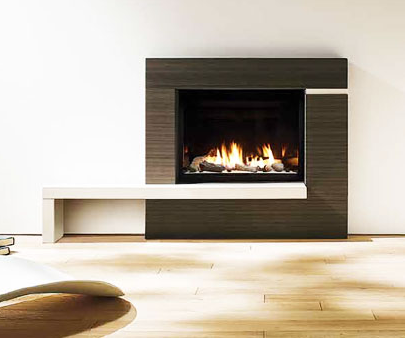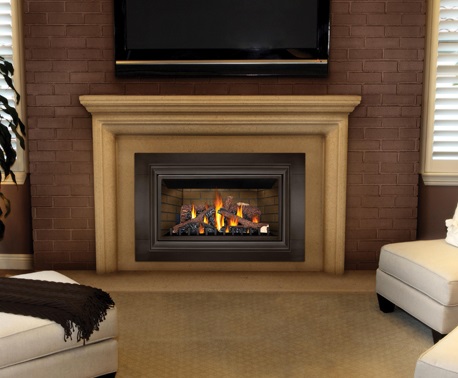Is a Gas Fireplace an Expensive Heat Source in Winter?
 Although perhaps initially attracted to a fireplace for the ambiance, most homeowners use fireplaces in the hopes of reducing their utility costs. A common question homeowners ask is whether a wood-burning fireplace or a gas fireplace is the more economical choice. Many don’t have any idea whether gas fireplaces are expensive to run during winter. Although it is often assumed that burning firewood is more economical, that may not be accurate. The answer involves more than comparing the price you pay for your wood supply or your gas or propane.
Although perhaps initially attracted to a fireplace for the ambiance, most homeowners use fireplaces in the hopes of reducing their utility costs. A common question homeowners ask is whether a wood-burning fireplace or a gas fireplace is the more economical choice. Many don’t have any idea whether gas fireplaces are expensive to run during winter. Although it is often assumed that burning firewood is more economical, that may not be accurate. The answer involves more than comparing the price you pay for your wood supply or your gas or propane.
How Expensive are Gas Fireplaces?
Gas fireplaces have high heating efficiency. Whether you use natural gas or propane for your gas fireplace, all of the gas is burned and converted to heat.
A gas fireplace provides wonderful radiant heat. If convective technology is a feature of your gas appliance, hot air from the firebox is pushed into the room.
One way to measure the expense of your fireplace is in the time you need to invest in it. When it comes to a gas fireplace, you cannot get a more convenient fire product. You don’t need to spend any amount of time to enjoy the heat from your gas fireplace, other than the flip of a switch, using a remote control, or adjusting a thermostat. Compare this to information about wood-burning fireplaces below.
How Expensive are Wood-Burning Fireplaces?
If your firewood is free, perhaps because you use the wood from your own property, there is obviously a cost benefit. But if time is money for you, the steps involved with burning wood come at a high cost, even if your wood costs nothing. A trip to haul firewood is necessary. If you do use your own lumber, you may use axes or chainsaws to cut the wood into logs that will fit into your fireplace.
The next step is to stack and store the wood until it is properly seasoned. This can take anywhere from six months to over a year, depending on many factors. Some types of wood, for instance, dry out more quickly than others. The wood pile where the logs are stacked may be exposed to too much moisture, may not allow enough air to flow through, or may not get enough sun, any of which would prolong the seasoning process.
Finally, your firewood is hauled into your home. After getting a fire started, the flames need to be carefully tended, to ensure that there is no risk of a house fire caused by a stray ember or falling logs.
Another added consideration, as regards wood-burning, is the fact that creosote is deposited in the chimney flue every time there is a blaze in the fireplace. The type of wood you burn partly determines how much creosote builds up in the lining of your chimney. Creosote is highly flammable. It is important to have it removed or at least checked annually, to reduce the potential of a dangerous chimney fire that is caused by an ember igniting the creosote. By comparison, gas fireplaces do not cause this type of issue with creosote, though annual inspections of gas fireplaces are important, simply to ensure safe operation of the appliances.
 Ultimately, it’s not practical to compare the cost of operating wood or gas fireplaces simply on cost of fuel alone, since those prices fluctuate. Consider time, convenience, practicality, and even the value of the hassle-free use of gas fireplaces, when calculating your cost.
Ultimately, it’s not practical to compare the cost of operating wood or gas fireplaces simply on cost of fuel alone, since those prices fluctuate. Consider time, convenience, practicality, and even the value of the hassle-free use of gas fireplaces, when calculating your cost.
Contact our chimney professionals for any questions you may have, to schedule a chimney inspection or cleaning, or for installation of a gas fireplace.








